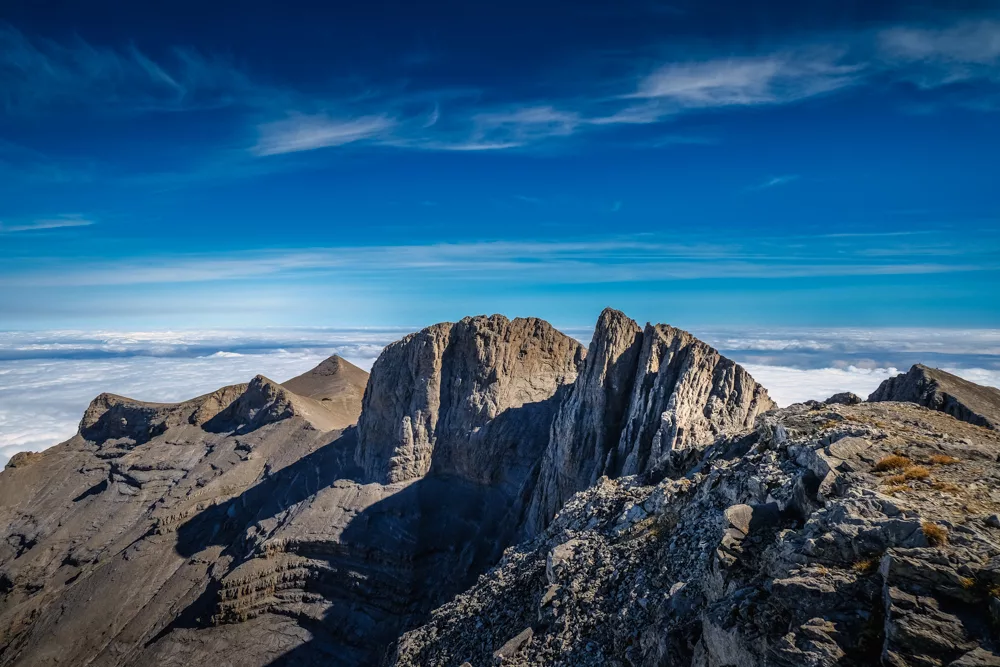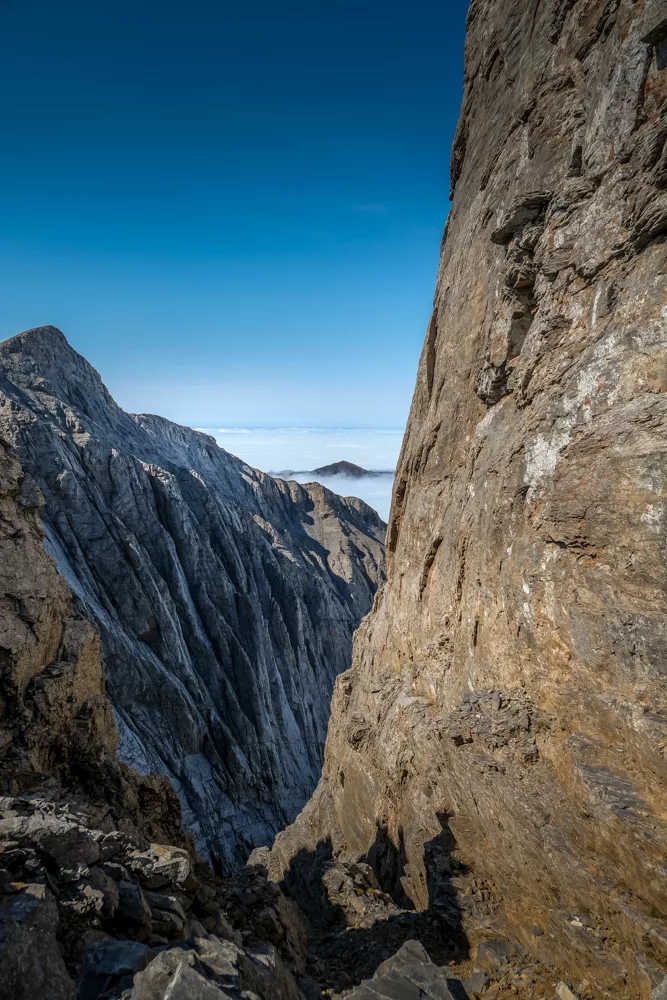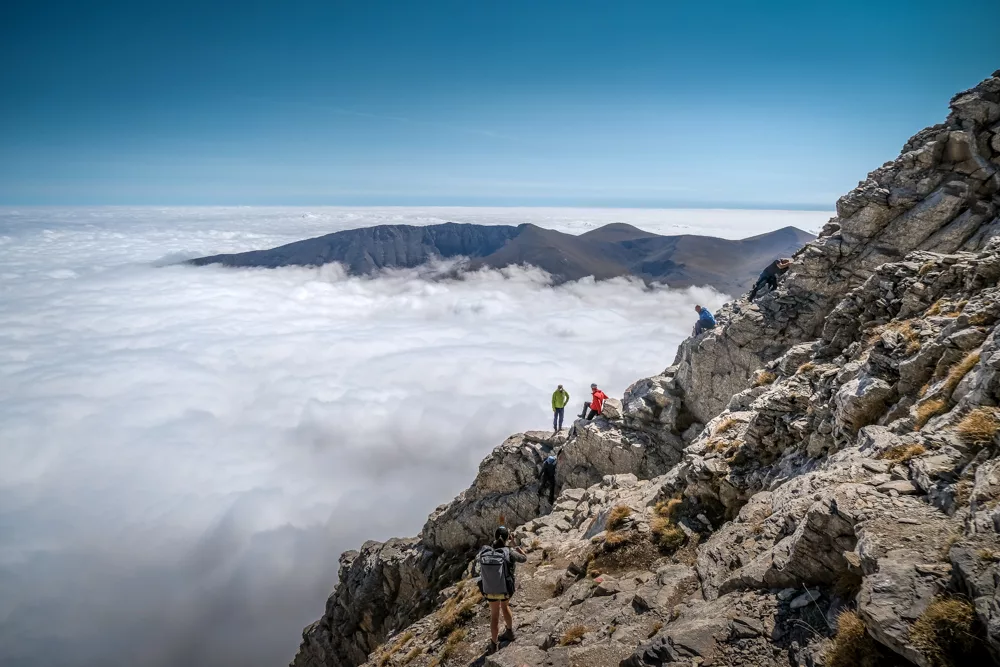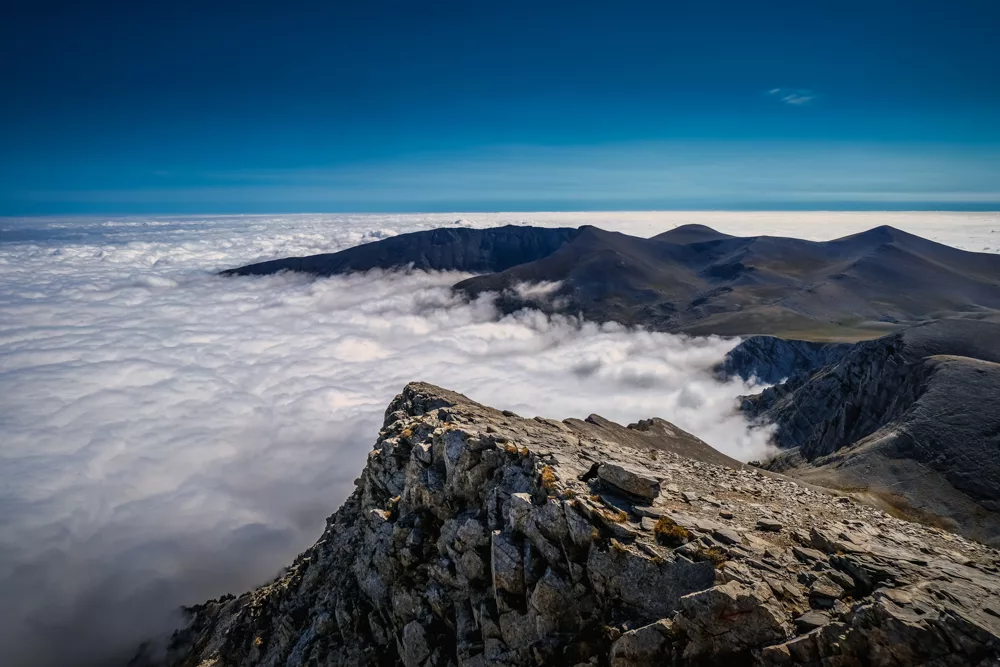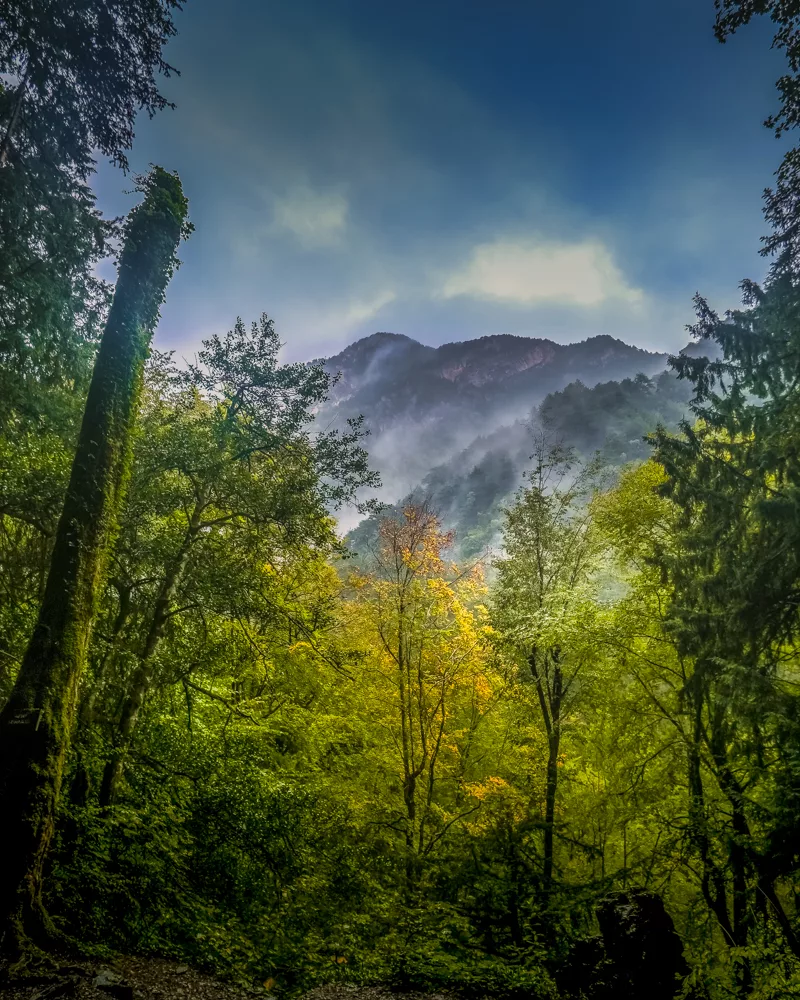Peter joins the Highlander Adventure team on Greece’s highest peak to scout the new Highlander Olympus trek launching next year
Trekking may not be the first thing that springs to mind when you think of a visit to Greece. Ancient ruins steeped in mythology, island-hopping across the Aegean or feasting on the country’s delectable cuisine will all likely register first. Enter Mt. Olympus, the highest and most storied of all Greek mountains.
The massif is home to a network of hiking trails and mountain huts to support trekkers on the slopes of the fabled “throne of the gods”. Legend has it that Zeus, the king of the gods in Greek mythology, lived atop the country’s highest point on the domed 2,902m (9,521ft) sub-peak of Stefani, otherwise known as Thronos Dios (Throne of Zeus).
The Highlander Olympus trek, one of the newest additions in the Highlander Adventure collection, was scheduled to launch this year but was postponed due to local lockdowns. As such, I was invited to join a truncated three-day event on the mountain to check out the route and some of the highlights of the trail.
Highlander Olympus trek
Distance: 102km (64mi)
Ascent/descent: 6,338m/6,337m
More info: highlanderadventure.com
The circular Highlander Olympus trail takes hikers on an enthralling journey through a national park rich in history, culture and ecological diversity. The terrain surrounding the sacred mountain, located in Greece’s oldest national park, is home to over 1,700 species of plant, 100 bird species and 30 mammals including wolves, jackals and Greek chamois.
The slopes below the treeline are thickly forested in places while the higher rocky peaks are frequently shrouded in cloud, often making the summit invisible to the mere mortals living in the valley below.
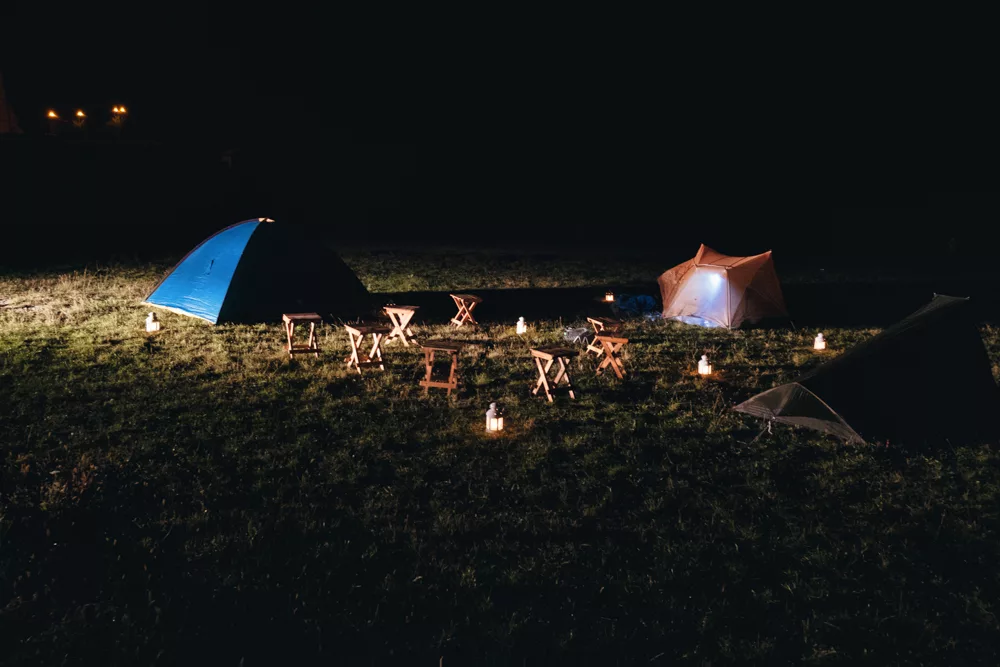
The trail begins and ends in the village of Litochoro, looping around the south of the mountain before turning northwards and then east up the lower slopes and summit ridges. Our team planned to complete sections of the trail while using vehicles to move between checkpoints and trailheads.
I met the team at Thessaloniki, the nearest international airport to the Olympus Range, and transferred to checkpoint two, a small camping field outside the Monastery of Agia Triada near the tiny village of Sparmos.

We camped for the night before transferring to Christaki Refuge, the site of checkpoint three, in the morning. Located at around 2,430m (7,972ft), the refuge is often used as a starting point by day-hikers intent on summiting Olympus as quickly as possible as it can be accessed by 4×4 vehicle. Meanwhile, most multi-day trekkers start from Priónia or Litohoro to the east of the mountain.
We paused at the refuge to organise our gear and snap a few photos before pulling on our packs and heading up the mountain. We joined a stony trail that gradually moves up the mountainside following the E4 trans-European long-distance footpath which traverses the entire Olympus massif as part of its 10,000km (6,200mi) course from Spain to Cyprus.
On the escarpment, the trail turns towards the Plateau of Muses at 2,650m (8,694ft) where the truly spectacular views begin to unfold. The enormous rocky Olympus summit massif, with its distinctive series of spiny pinnacles, looms above the surrounding sea of clouds.
We paused at the 2,911m (9,551ft) sub-peak of Skolió with its phenomenal views for a quick break before heading onwards along the escarpment towards the next sub-peak of Skala at 2,866m (9,403ft).
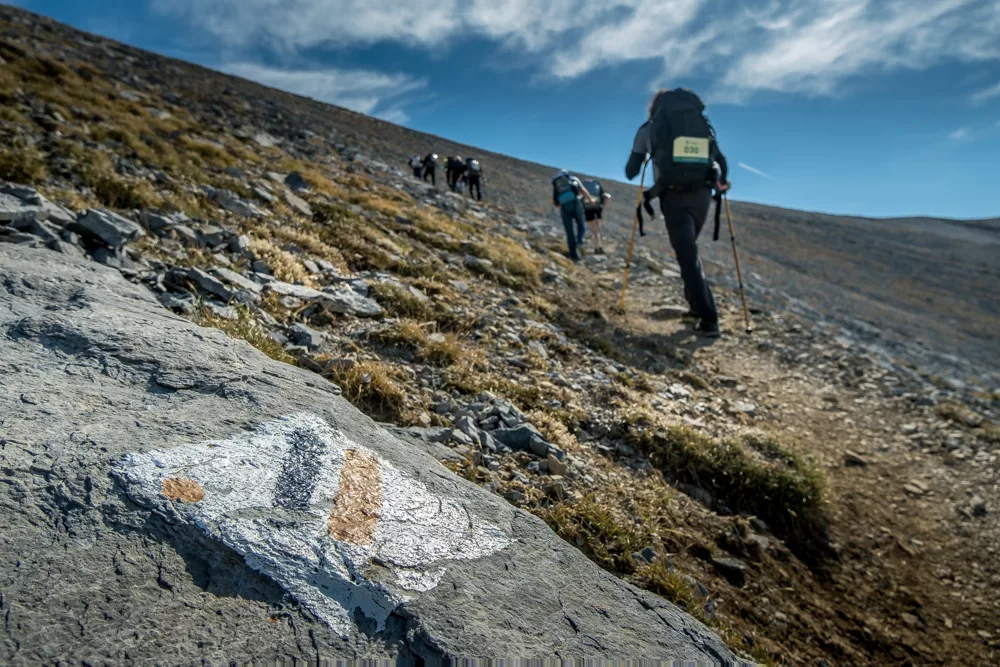
The official Highlander route doesn’t take in the mountain’s true high point, the 2,918m (9,570ft) peak of Mytikas, as it requires a challenging scramble, rated as a Class Three rock scramble in the US or a Category Three on the UK system. However, for anyone confident in their abilities and comfortable with clambering across exposed rockface, a diversion to the summit is attainable.
We were keen to bag the highest peak so left our heavy packs at Skala and began the thrilling scramble to Mytikas. The Kaki Skala, or Devil’s Staircase, initially heads steeply down into the chasm separating the two peaks before the route twists back and forth up a steep gully, round rock projections and across recesses above a number of stomach-churning drops.
The summit platform of Mytikas offers panoramic views of a carpet of cloud punctuated only by the jagged peaks of the Olympus massif. On a clear day, it’s possible to look all the way out to the glittering Aegean.
The diversion takes an extra two hours from Skala peak and demands a significant amount of energy after an already long day of hiking. Hikers should only undertake the Mytikas summit ascent if they have scrambling experience and are comfortable on exposed terrain.
After the obligatory summit photos, we retraced our route back to Skala and then joined a shingly trail that rapidly drops as it bisects a scree slope. We descended into the clouds as the trail rejoined the treeline en route to Spilios Agapitos Refuge. We continued through a peaceful section of the woodland known as the “forest of silence” and onwards to Priónia, the site of checkpoint four.
We weren’t camping at Priónia, so met our jeeps to transfer to the Monastery of Agios Dionysios further along the trail. There we camped in a small clearing in the forest beside the trail, ready to complete part of the final section to Litohoro in the morning.
Although we’d had good weather for the summit, we were always aware that a rainstorm was forecast to hit the region and it arrived in the morning in force. The four-hour hike from our campsite at the monastery was pretty miserable despite cutting through the gorgeous Enipéas canyon with its vertiginous forest-clad bluffs and cliffside vantage points.
By the time we arrived at Litohoro we were soaked through and so we dived into the nearest cafe to order cups of steaming coffee and change into dry clothes.

Overall, our team completed 40km of the 102km trail and saw three of the four checkpoints as well as the start/finish line so got a good sense of what the Highlander Olympus trek will offer hikers when it launches next year.
With dense atmospheric forests, deep-cleaved canyons and an iconic summit ridge, the journey over the cloud-covered lair of the Ancient Greek pantheon was everything the myths suggest: magical.
How to register
The final date for the 2022 Highlander Olympus trek 2022 is yet to be confirmed but will likely run in June.
Early bird entries begin at €149 ($180) per person. If joining in a group there are four-for-three offers available.
The Highlander website includes information on how to register as well as more details regarding checkpoints, the route, equipment and some basic guidelines for hiking in the region. More information including joining instructions is provided following registration.
Make sure you have suitable insurance. I bought mine from TrueTraveller. For a trek such as this, you’ll need the Extreme Adventure Pack.
Enjoyed this post? pin it for later…

